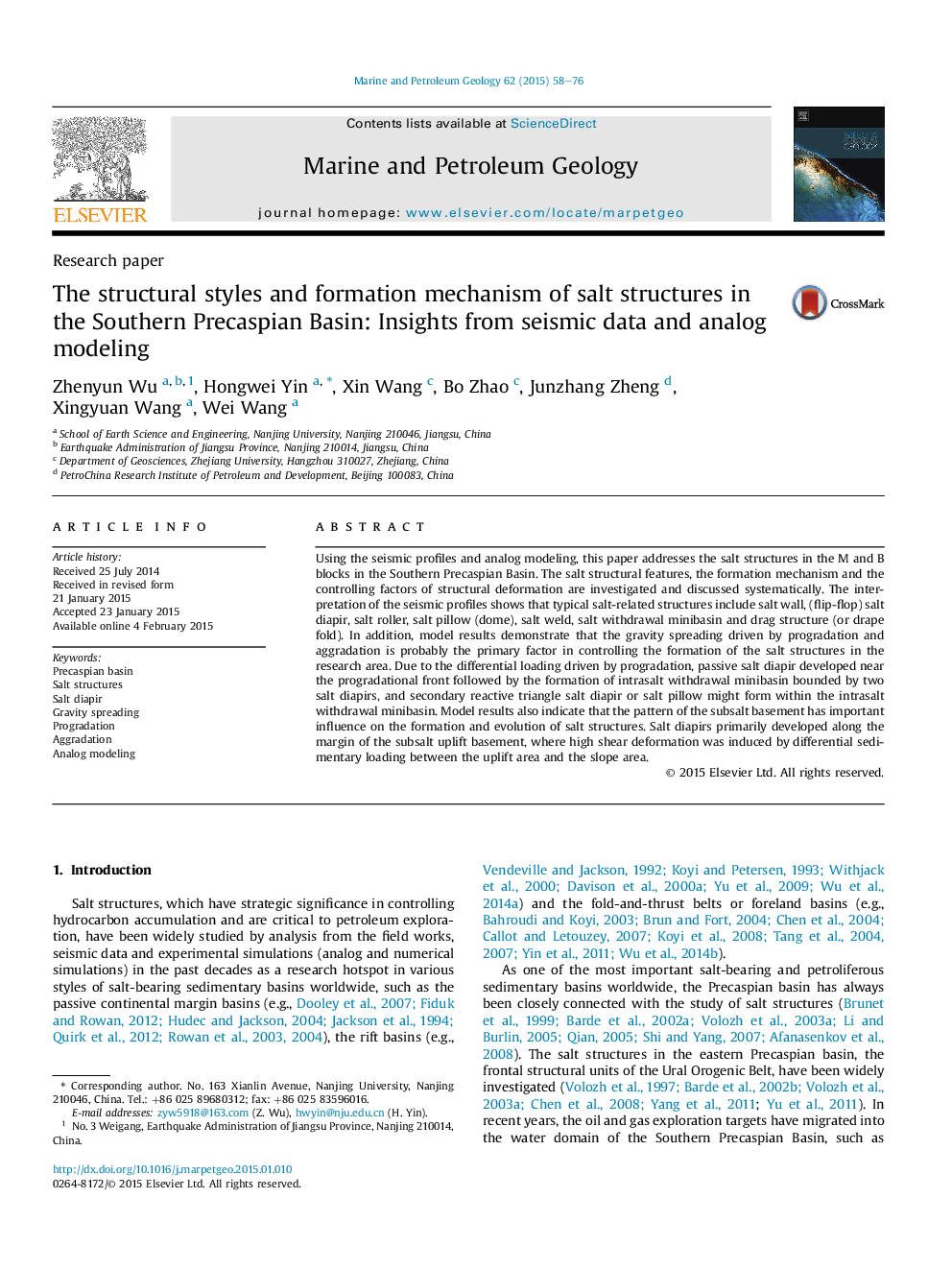| Article ID | Journal | Published Year | Pages | File Type |
|---|---|---|---|---|
| 4695561 | Marine and Petroleum Geology | 2015 | 19 Pages |
•Salt structures in the Precaspian Basin are analyzed using scaled sandbox model.•Salt diapir formed at the progradational front by differential sedimentary loading.•Reactive salt diapir was induced by gravity spreading in the intrasalt minibasin.•Salt diapirs formed along the hinge between uplift and slope.
Using the seismic profiles and analog modeling, this paper addresses the salt structures in the M and B blocks in the Southern Precaspian Basin. The salt structural features, the formation mechanism and the controlling factors of structural deformation are investigated and discussed systematically. The interpretation of the seismic profiles shows that typical salt-related structures include salt wall, (flip-flop) salt diapir, salt roller, salt pillow (dome), salt weld, salt withdrawal minibasin and drag structure (or drape fold). In addition, model results demonstrate that the gravity spreading driven by progradation and aggradation is probably the primary factor in controlling the formation of the salt structures in the research area. Due to the differential loading driven by progradation, passive salt diapir developed near the progradational front followed by the formation of intrasalt withdrawal minibasin bounded by two salt diapirs, and secondary reactive triangle salt diapir or salt pillow might form within the intrasalt withdrawal minibasin. Model results also indicate that the pattern of the subsalt basement has important influence on the formation and evolution of salt structures. Salt diapirs primarily developed along the margin of the subsalt uplift basement, where high shear deformation was induced by differential sedimentary loading between the uplift area and the slope area.
